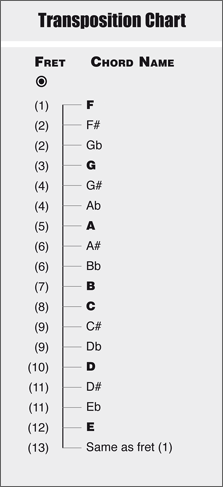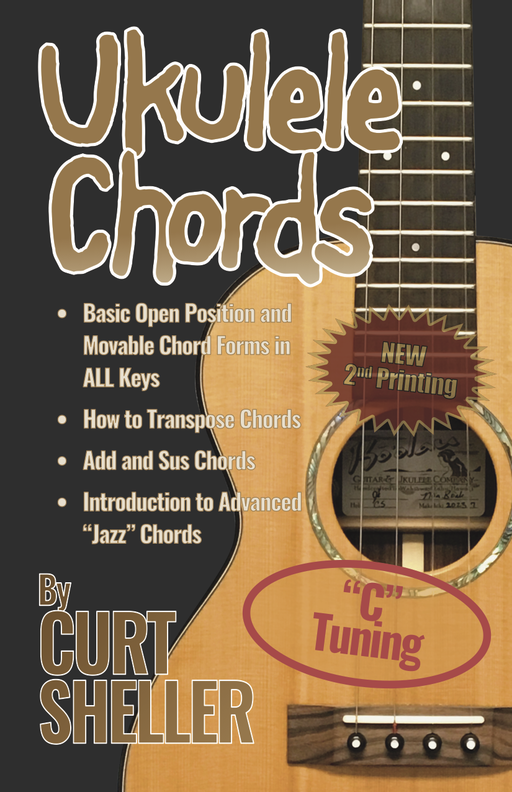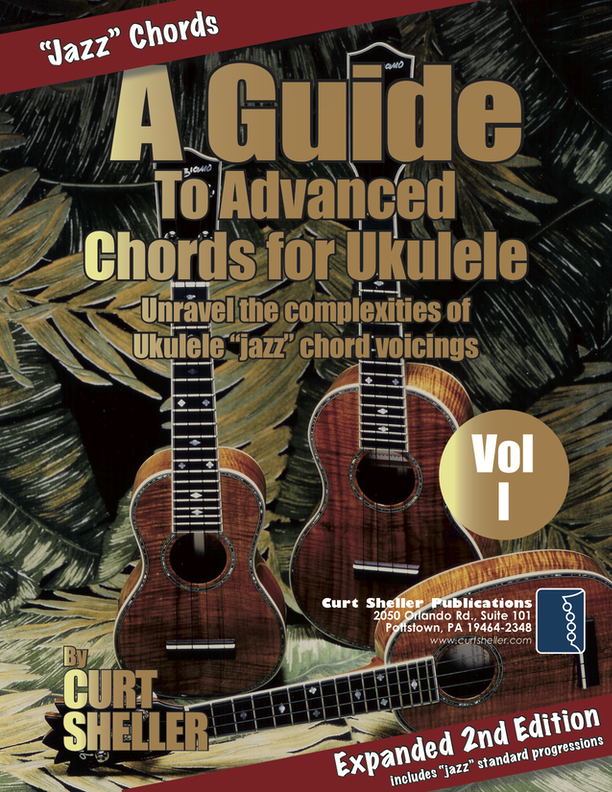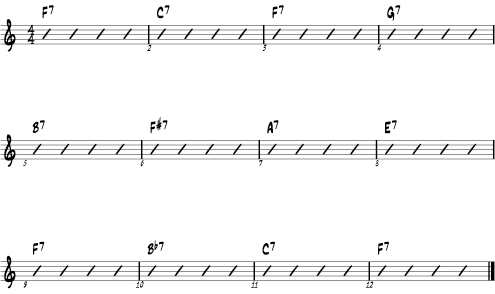Open position F7 chord and its movable form and variations.
Open position F7 and its movable form and variations - Sevenths, Major Sevenths, Minor Sevenths, Diminished, Augmented chords sus and add chords.
Available for Premium Site Access Plans Only


The chord tones of a F7 chord are the 1st, 3rd, 5th and flatted 7th scale degrees of the F Major Scale ( F G A Bb C D E F' ) .


- 1 – the Root or letter name of F7 is F
- 3 – the third of F7 is A
- 5 – the fifth of F7 is C
- b7 – the flat seventh of F7 is Eb


 Use the Root or perceived root of the chord to transpose to different keys.
Use the Root or perceived root of the chord to transpose to different keys. A larger sized transposition chart is available in the Ukulele Chords book. This is the book these expanded chord lessons are based on.
A larger sized transposition chart is available in the Ukulele Chords book. This is the book these expanded chord lessons are based on.


Related Lessons, Videos, Lesson Series, Songs, Books & Reference Charts, Resources & Assets, Workshops are below.


return in your investment)—it is this— learning the
f*ckingnotes of your OWN instrument. Sorry for the tough talks—but it is sooooo true!


Learn to read single note melodies in the first/open position is a lot easier than you might think. Book: Ukulele – Reading Music Series – Primer

An organized collection of daily practice and reference material for the contemporary ukulele player for developing the vocabulary and knowledge necessary for single note playing. Book: Daily Practice Material for the Contemporary Ukulele
Checkout the Books & Reference Charts for additional Handy, Dandy Reference Charts.

Ukulele Fingerboard Chart for C Tuning, Low or High G – G C E A

Ukulele Fingerboard Chart for G Tuning, Low or High A – D G B E

A handy reference chart of all 15 major and relative minor key signatures. US Letter 8.5 x 11 sized (ANSI-A) , A4




.jpg)